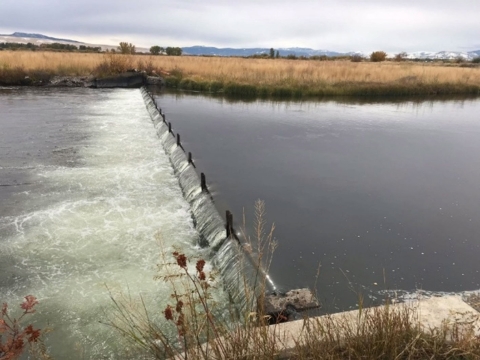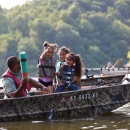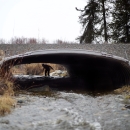States
MontanaThis project will reconnect bull trout habitat at the headwaters of the Clark Fork River in western Montana, through construction of fish passage fish passage
Fish passage is the ability of fish or other aquatic species to move freely throughout their life to find food, reproduce, and complete their natural migration cycles. Millions of barriers to fish passage across the country are fragmenting habitat and leading to species declines. The U.S. Fish and Wildlife Service's National Fish Passage Program is working to reconnect watersheds to benefit both wildlife and people.
Learn more about fish passage improvements and installation of fish screens at four irrigation diversions on the Clark Fork River that impede upstream passage and divert migratory fish. These improvements will provide year-round fish passage for all fish species and life stages, prevent diversion of migratory fish in irrigation ditches, maintain irrigation water delivery, and improve recreational float passage. In total, the project will reconnect the uppermost 27 miles of mainstem Clark Fork River habitat over the next four years, complementing on-going efforts in Warm Springs Creek to reconnect an additional 64 miles of habitat.
Project Quick Facts:
| Location | Montana |
| NFPP Project Funding | $1,000,000 |
| Restoration Techniques | Design, fishway replacement |
| Partner Project Lead | Trout Unlimited |
The National Fish Passage Program combines technical expertise with a track record of success.
Implemented primarily through the Service's Fish and Wildlife Conservation Offices, the National Fish Passage Program provides financial and technical assistance to partners across the country. Since 1999, the program has worked with over 2,000 local communities, Tribes, and private landowners to remove or bypass over 3,400 barriers to fish passage and reopen access to over 61,000 miles of upstream habitat for fish and other animals. Staff have expertise in fish migration and biology as well as financial, engineering, and planning assistance to communities, Tribes, and landowners to help them remove barriers and restore rivers for the benefit both fish and people.
Fish passage project proposals can be initiated by any individual, organization, government, or agency. However, proposals must be submitted and completed in cooperation with a Fish and Wildlife Conservation Office. (Please note that fish passage projects being used for federal or state compensatory mitigation or required by existing federal or state regulatory programs are not eligible for funding through the National Fish Passage Program.)
CONTACT A FISH PASSAGE COORDINATOR IN YOUR AREA TO GET STARTED.



